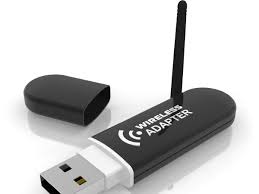You’ve probably heard the saying, ‘A chain is only as strong as its weakest link.’
When it comes to your wireless network, the strength of your WiFi connection is often dependent on the quality of your WiFi adapter.
But what exactly are WiFi adapters and how do they work?
Let’s explore the fundamental aspects of these devices, shedding light on their functionality and importance in ensuring seamless connectivity in your digital endeavors.
Types of WiFi Adapters
When choosing a WiFi adapter, it’s important to understand the various types available to suit your specific needs.
The first type is the USB WiFi adapter, which is a popular choice for its plug-and-play convenience. Simply plug it into an available USB port on your device, install the necessary drivers, and you’re ready to connect to a wireless network.
Another type is the PCI WiFi adapter, which is installed directly onto your computer’s motherboard. This type offers a more stable connection and can provide faster speeds compared to USB adapters.
For laptops, there are also PCMCIA WiFi adapters that slide into the PC card slot. These are compact and ideal for on-the-go connectivity.
Lastly, there are also mini PCIe WiFi adapters designed for small form-factor devices like mini PCs. Understanding the different types will help you choose the right WiFi adapter that best fits your setup and requirements.
Components of a WiFi Adapter
To understand how a WiFi adapter functions, it’s important to explore the key components that make up its structure and operation. The main components of a WiFi adapter include the antenna, which receives and transmits wireless signals, the radio frequency (RF) circuitry responsible for converting data into radio waves and vice versa, and the baseband processor that handles tasks like error correction and signal modulation. Additionally, there’s the USB interface that connects the adapter to your device, enabling data transfer.
Within the adapter, you’ll find the firmware, a type of software embedded in the hardware to control its operations. The drivers, another crucial component, facilitate communication between the adapter and your operating system, allowing for seamless integration. Some advanced adapters may also feature multiple antennas for improved signal strength and stability.
Understanding these components gives insight into how a WiFi adapter interacts with your device and the network, ultimately enabling wireless connectivity and data transfer.
How WiFi Adapters Connect
Connecting a WiFi adapter involves establishing a wireless link between your device and a network. The process begins by plugging the adapter into a USB port on your computer or laptop. Once connected, the adapter detects available WiFi networks in the area. You then select the network you want to join and enter the password if required. The WiFi adapter communicates with the network through radio waves, allowing data to be transmitted and received wirelessly.
To ensure a stable connection, it’s essential to place the WiFi adapter in an area with minimal interference from physical obstructions or other electronic devices. The adapter connects to the network’s router, which serves as the central hub for transmitting data between your device and the internet. When successfully connected, the WiFi adapter enables your device to access the internet and communicate with other devices on the network seamlessly.
Benefits of Using WiFi Adapters
After successfully connecting your WiFi adapter to the network, you can now explore the numerous benefits of using this wireless technology. One of the primary advantages is the convenience it offers. With a WiFi adapter, you can connect to the internet without the need for cumbersome cables, allowing for greater mobility and flexibility in where you can work or browse online.
Additionally, WiFi adapters provide faster data transfer speeds compared to traditional wired connections, enhancing your overall internet experience by reducing lag and buffering times.
Another benefit of using WiFi adapters is the ability to connect multiple devices simultaneously. Whether it’s your laptop, smartphone, smart TV, or gaming console, a WiFi adapter allows you to connect all your devices to the internet without the hassle of multiple wired connections. This can streamline your home or office setup and make it easier to manage your network.
Furthermore, WiFi adapters enable you to access WiFi networks in various locations, such as cafes, airports, and hotels, providing you with internet connectivity on the go. This flexibility is especially useful for remote workers, travelers, and individuals who need to stay connected while away from home.
Troubleshooting WiFi Adapter Issues
If you encounter connectivity problems, troubleshooting WiFi adapter issues can help resolve any issues quickly and efficiently.
Start by checking physical connections. Ensure the adapter is securely plugged into the USB port. If using an internal adapter, confirm it’s properly seated in the motherboard.
Restart your computer as a simple reboot can often fix minor connection problems. Updating your WiFi adapter drivers is crucial. Visit the manufacturer’s website or use device manager to check for driver updates. In case of driver issues, uninstall and reinstall the drivers.
Interference from other electronic devices may disrupt the signal. Keep your adapter away from devices like microwaves and cordless phones. Resetting your router can also solve adapter problems. Turn off the router for 30 seconds and then power it back on.
If issues persist, try using the adapter on another device to determine if the problem lies with the adapter or your computer.
Conclusion
In conclusion, WiFi adapters are essential devices that allow you to connect your computer or device to a wireless network.
By understanding the types of adapters available, how they work, and how to troubleshoot common issues, you can ensure a seamless and reliable internet connection.
Whether you’re at home, in the office, or on the go, WiFi adapters provide the convenience and flexibility needed to stay connected.
